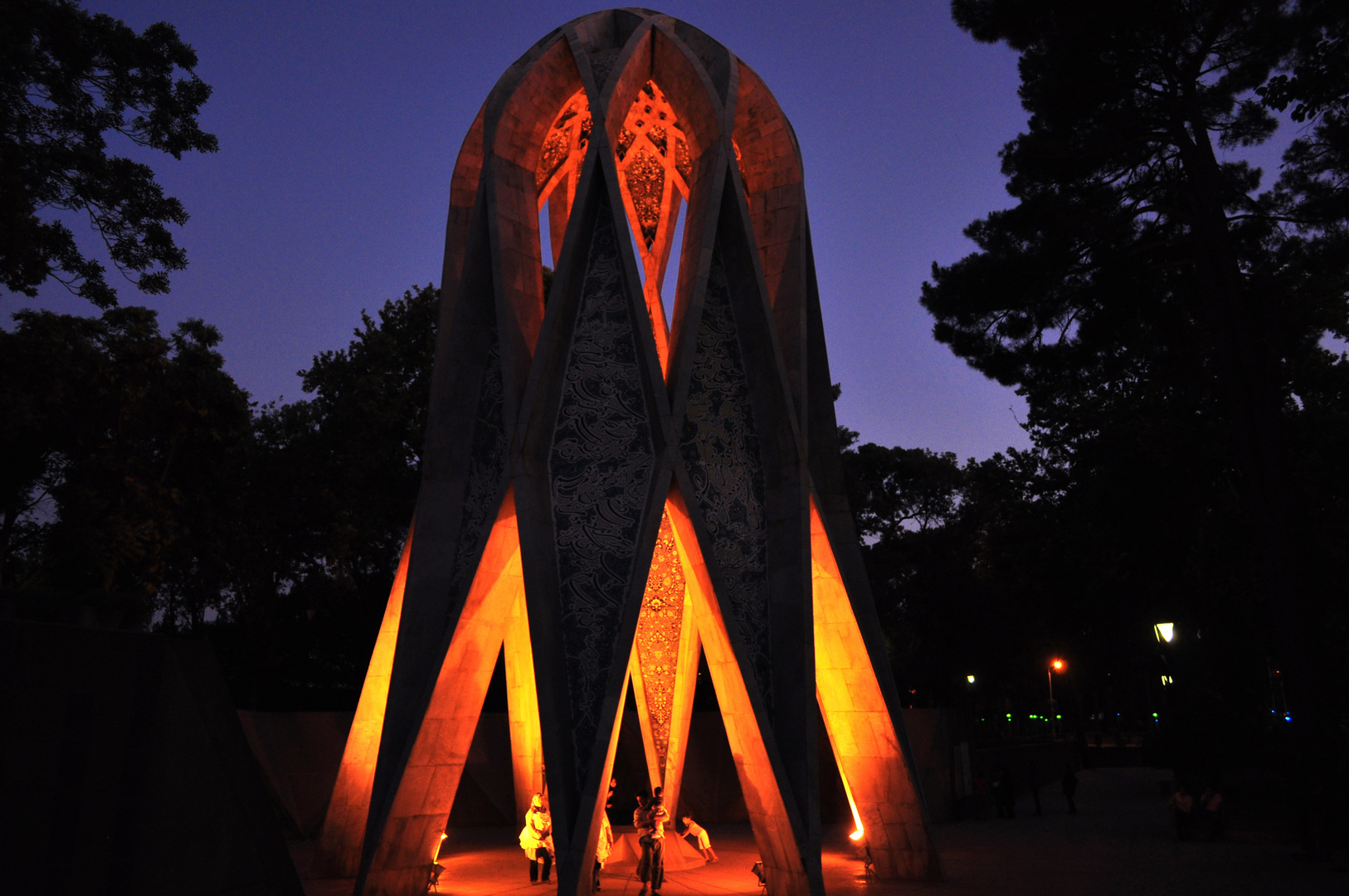khayyam
Famous Iranian Poet
Cemetery
Omar Khayyám (Persian: عمر خیام, Early New Persian. pronunciation /ˈoːmɒːɾ xæjˈjɒːm/, English pronunciation /ˈoʊmɑr kaɪˈjɑm/) (18 May[2] 1048–1131) was a Persian mathematician, astronomer, philosopher and poet. He also wrote treatises on mechanics, geography, and music.[3]
Born in Nishapur, at a young age he moved to Samarkand and obtained his education there, afterwards he moved to Bukhara and became established as one of the major mathematicians and astronomers of the medieval period. He is the author of one of the most important treatises on algebra written before modern times, the Treatise on Demonstration of Problems of Algebra, which includes a geometric method for solving cubic equations by intersecting a hyperbola with a circle.[4] He contributed to a calendar reform.
His significance as a philosopher and teacher, and his few remaining philosophical works, have not received the same attention as his scientific and poetic writings. Zamakhshari referred to him as “the philosopher of the world”. Many sources have testified that he taught for decades the philosophy of Ibn Sina in Nishapur where Khayyám was born and buried and where his mausoleum today remains a masterpiece of Iranian architecture visited by many people every year.[5]
Outside Iran and Persian speaking countries, Khayyám has had an impact on literature and societies through the translation of his works and popularization by other scholars. The greatest such impact was in English-speaking countries; the English scholar Thomas Hyde (1636–1703) was the first non-Persian to study him. The most influential of all was Edward FitzGerald (1809–83),[6] who made Khayyám the most famous poet of the East in the West through his celebrated translation and adaptations of Khayyám's rather small number of quatrains (










Zeynab Niroomand 03/09/2011 13:30
It's magnificent. Thanks.Raheleh Rashidian 31/07/2011 10:40
Great...Majid mehraban 30/07/2011 19:43
Nice shot,i like itNati E. 30/07/2011 11:44
First time I hear something about this poet, interesting! He had so many talents.Beautiful picture!
Ingrid H 30/07/2011 10:17
beautiful night-scene - dastetan dard nakone! bye ingrid hPhotomann Der 30/07/2011 0:15
interesting !!!theosfotos 29/07/2011 23:04
schöne farben, mystischgefällt mir gut
schöne grüsse
theo